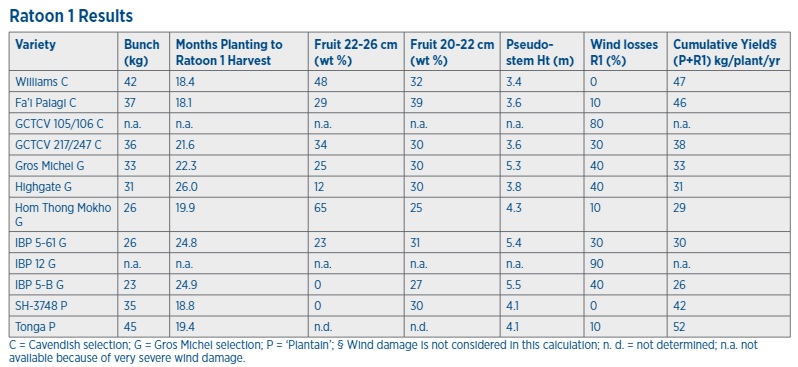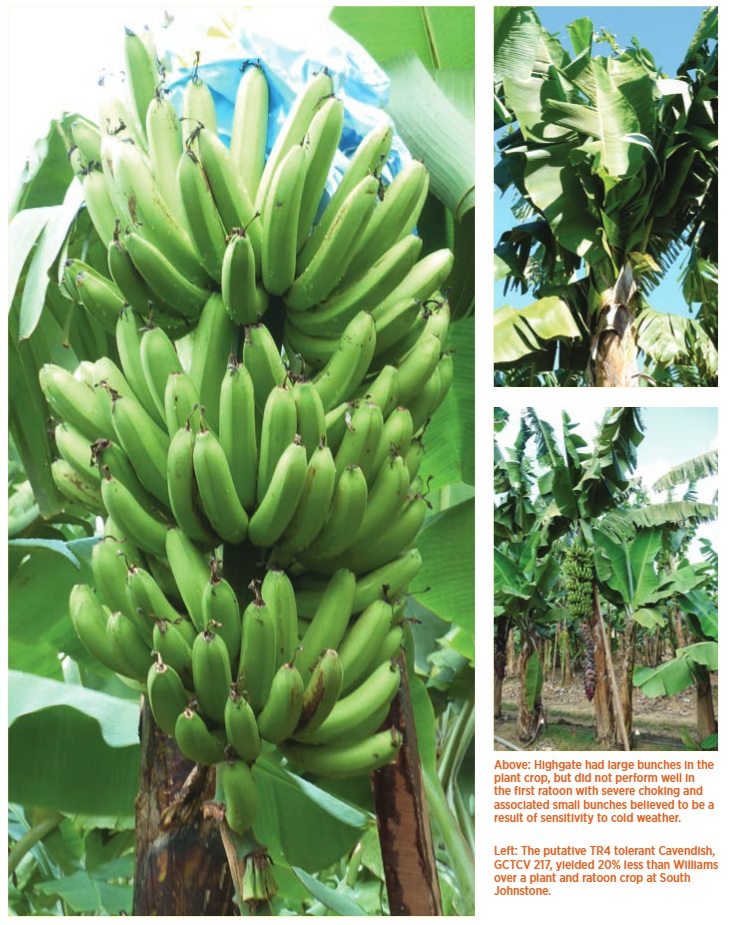As part of the Banana Plant Protection Program project Jeff Daniels has been evaluating the agronomic performance of new banana varieties at South Johnstone.
Results from the plant crop were presented in Australian Bananas vol 44, pp 26-27. More background information on the varieties can be found in Australian Bananas vol 38, p 15 and vol 28, pp 44-45.
Williams – highest yielding dessert cultivar
As in plant crop the industry standard, Williams had the heaviest bunch weight of the dessert cultivars.
It was also the fastest to cycle and so was the highest yielding (kg per plant per year) along with the Samoan Cavendish selection Fa’i Palagi.
The Taiwanese selection GCTCV 217, which was three months behind Williams at the completion of ratoon 1, yielded (kg per plant per year ) 78 per cent of Williams (down from 89 per cent in plant crop).
GCTCV 105 ratooned poorly and all but one plant blew over during January and March 2014 before harvest maturity.
The Gros Michel subgroup of cultivars yielded 75 per cent or less compared to Williams, but this lower yield is to be expected with this subgroup of dessert bananas when compared to many Cavendish cultivars.
Highgate performed poorly in ratoon 1 with several plants having severe choke throat and associated smaller bunches as a result.
This was presumably due to its greater sensitivity to cold weather for what was a relatively cool winter in 2014.
The cooking cultivars SH-3748 and Tonga continued to yield well.
Fruit of Cavendish type bananas which is between 20 and 26 cm in length receives a premium price in the marketplace with 22-26 preferred.
The cultivars Williams, Fa’i Palagi, GCTCV 217 and Hom Thong Mokho (a Gros Michel-like selection) had the best results.
This was partly related their earlier bunch emergence with bunch filling occurring during the warmer months when temperatures were more favourable to finger length development.
Strong winds caused heavy losses in ratoon 1
Wind damage in the first ratoon was more severe than in the plant crop which was partly related to plants being taller in the ratoon.
However, wind damage was not just confined to the taller cultivars.
These losses mostly resulted from strong winds on several occasions during the first half of 2014.
If these losses are indicative of what would happen with commercial plantings in north Queensland then several of these cultivars would be difficult to produce profitably.
What next?
At the completion of the ratoon 1 crop the block was nurse suckered to prepare it for yellow Sigatoka screening during 2015.
Results from this and Panama disease race 1 screening will be presented in the next edition of Australian Bananas.


